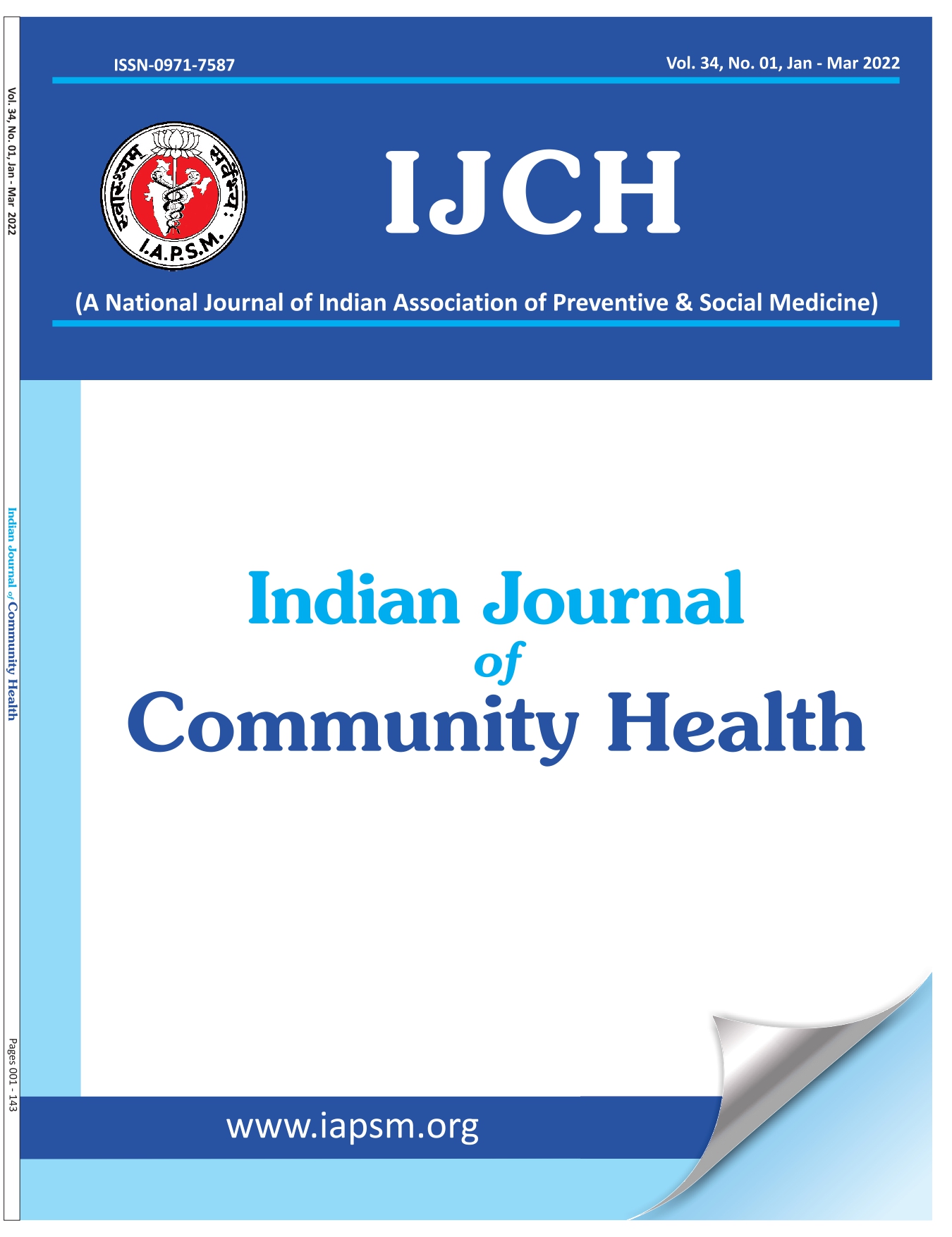Assessment of undernutrition among children below 5, using Composite Index of Anthropometric Failure (CIAF)
DOI:
https://doi.org/10.47203/IJCH.2017.v29i01.016Abstract
Background: SDG 2.2 aims to end all forms of malnutrition by 2030. Weight for age estimate misses out chronic and acute on chronic malnutrition. An aggregate indicator-the Composite Index of Anthropometric Failure (CIAF) can help in addressing this concern. Aim & Objective: To assess the nutritional status of under five children using CIAF and compare it with other indices. Material & Methods: A cross-sectional, descriptive study was conducted in a resettlement colony of Delhi, between June to July 2015. Anthropometric measurements were taken using standard operative procedures. Mothers of the study children were interviewed to obtain relevant information. Z scores were calculated using WHO-ANTHRO software. Nutritional status indicators were determined as per the World Health Organization 2006 child growth standards. Results: A total of 100 under-5 children were assessed. The prevalence of CIAF was 62% in our study. 35% of children were found to be underweight, 25% were wasted and 43% stunted. Mid Upper Arm Circumference detected 58.5% as undernourished. Using weight-for-age criterion for identifying undernourished children led to underestimation of the prevalence by 27%. Conclusion: CIAF can be used to provide a single, aggregated assessment of undernutrition. Use of this tool by field level workers will improve the diagnosis of undernutrition and help in early initiation of treatment.
Downloads
Downloads
Published
How to Cite
License
Copyright (c) 2017 Indian Journal of Community Health

This work is licensed under a Creative Commons Attribution-NonCommercial-NoDerivatives 4.0 International License.





